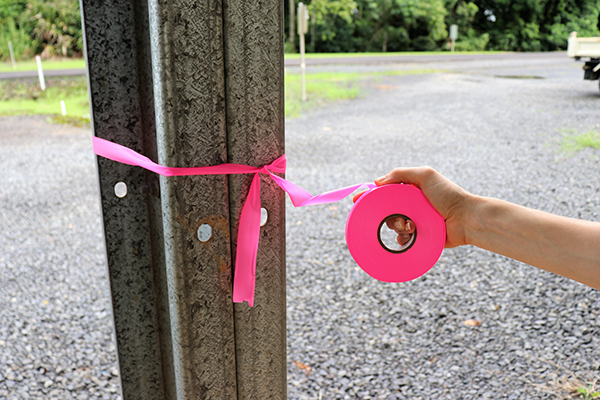Starting your biosecurity plan
The first step is to understand the potential risk pathways on your farm. Each farms layout is unique, and it may seem challenging if you must consider roads, rivers and railway tracks which pass through your property. The best way is to break it down.
1. Grab a map of your farm and a pen. Google Maps is a good source of satellite imagery.
2. Think about all the different ways people, vehicles and machinery move on and off your farm. With these movements in mind divide your farm into zones: exclusion, separation (The separation zone manages movement of essential vehicles entering your farm, as it acts as a buffer between the exclusion and farming zones) and farming.
3. Choose one point at the edge of each zone where people, vehicles and machinery can move in and out.
4. Then consider what you will put in place at each of these points to cross between zones – e.g. boot exchange, footbath, spray shuttle, wash-down pad.
5. Think about water movement and mark down on your map any areas which flood and where you source water from.
6. Consider where you get planting material from. Do you know the risks associated with the type of planting material you use and are you happy with this risk?
Handy tips!
-
Tissue culture from a QBAN approved facility provides the best protection against moving and spreading Panama disease or other banana pests and diseases such as nematodes and banana weevil borer.
-
Some things are always beyond your ability to control, focus on the things you can do.
-
Think of your farm as an airport where everyone needs to enter through a security barrier. Instead of a metal detector you might have a boot exchange, a footbath or something else which stops an unknown threat from getting in.
-
Making a start is often the hardest part. Make a list of practices; start with one practice and work your way down the list as you can.
-
Start with temporary measures like flagging tape before installing a permanent fence to see if it works first.


Assistance is available
You’re not on your own. The following video features advice from banana growers on starting your biosecurity plan. The National Banana Development and Extension Team is also available to help you get started. Contact our team today via email betterbananas@daf.qld.gov.au or phone 07 4220 4152.
This resource has been developed as part of the National Banana Development and Extension Program (BA19004) which is funded by Hort Innovation, using the banana research and development levy, co-investment from the Department of Agriculture and Fisheries and contributions from the Australian Government. Hort Innovation is the grower-owned, not-for-profit research and development corporation for Australian horticulture.


